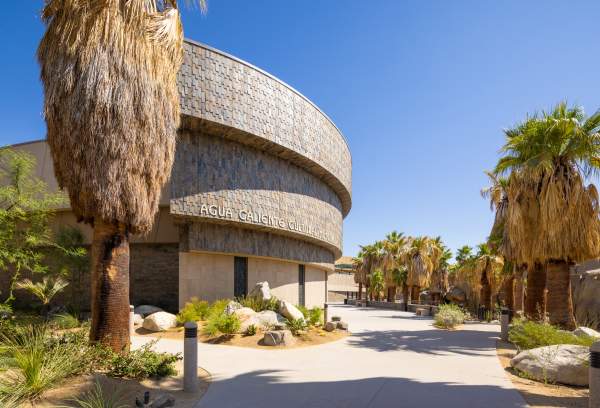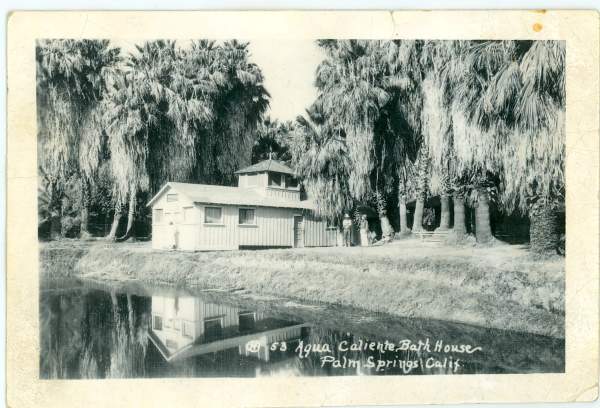The Agua Caliente Band of Cahuilla Indians is a federally recognized tribe of the Cahuilla Native American people. Their creation as a federally recognized entity can be traced to the early 19th century. This is a brief account of the Agua Caliente Tribe's history.
Cahuilla Leadership Timeline
Agua Caliente tribe was organized into several clans, each with its own leader or chief. These chiefs were responsible for guiding their clans, making important decisions, and representing their people in various matters. The early accounts of the leadership of the Agua Caliente tribe highlight their resilience, adaptability, and strong commitment to their people and land. Their leaders played a crucial role in navigating colonization challenges while striving to protect their tribal identity and heritage.

Credit: Agua Caliente Tribe
Note: Reid Milanovich, son of past Chairman Richard Milanovich, is the current Chairman following Jeff Grubbe.
The Agua Caliente tribe continues to have a strong leadership structure and work together to address the needs of their community, advocate for their rights, and ensure the preservation of their cultural heritage.
Cahuilla Creation Story
The Agua Caliente tribe's history dates back thousands of years.
There are several versions of the Cahuilla creation story. One version told by Tribal spiritual leader Alejo Patencio in the 1920s begins with Mukat and Temayawut, two brothers who emerged from a swirling mass of colors during the universe’s first moments. After their birth, Mukat and Temayawut formed the earth, the oceans, all the creatures of the sea, and the sky.
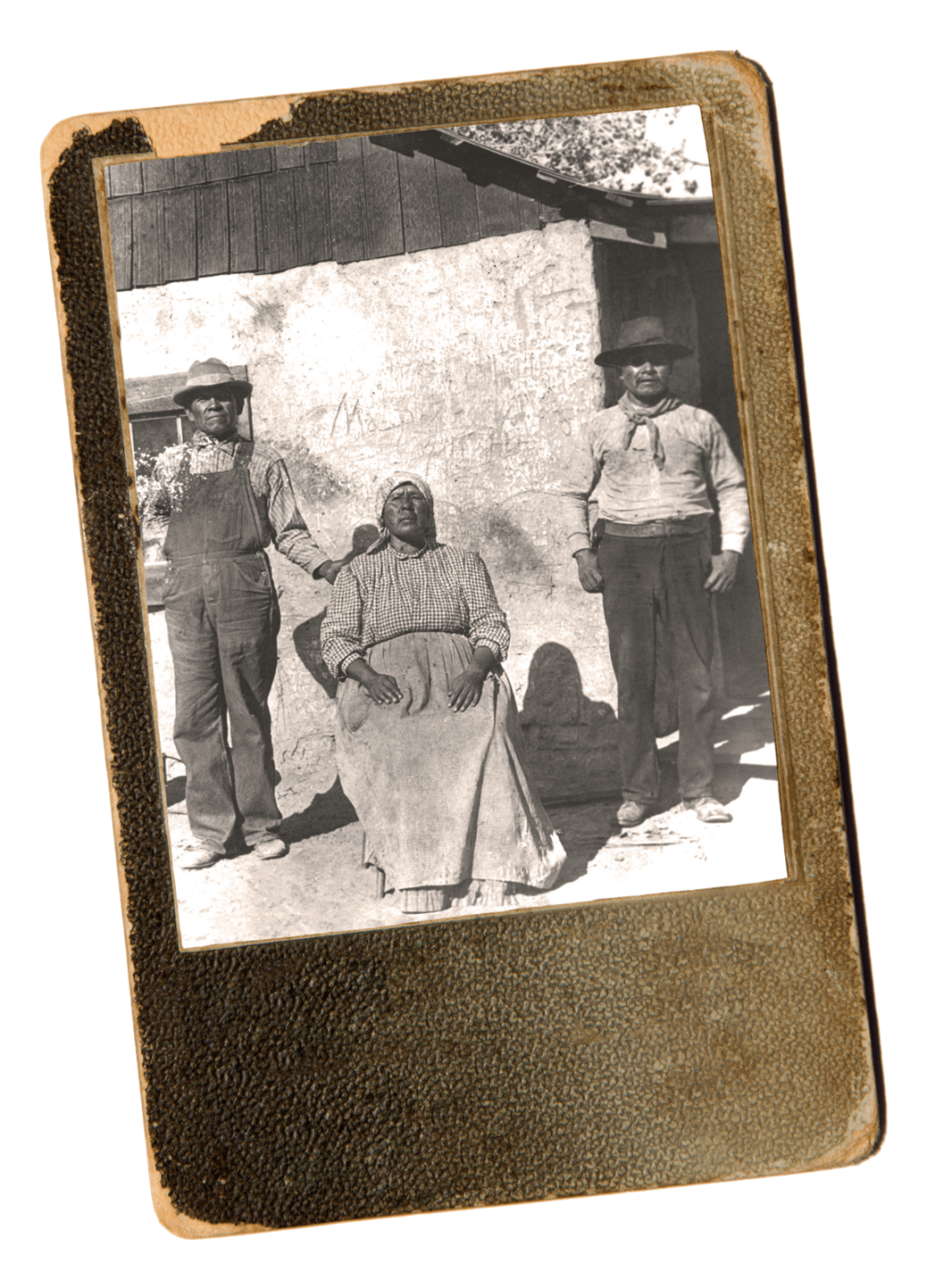
Obove: Franciso, Dolore, Alejo Patencio
From there, the brothers created the first people. Mukat used black mud and worked carefully, while Temayawut used white mud and hastily sculpted his figures, which — compared to Mukat’s — were unrefined. After disagreeing with his brother over whose bodies were better, Temayawut took his creations and left.
Mukat’s creatures came to life, and the sun emerged. These people — the first Cahuilla — lived alongside early beings called nukatem. Because they had more ?kiva?a, the primary energy source from which all things in the universe are created, the nukatem were seen as powerful spirits who appeared in various forms: meteors, rainbows, whirlwinds, stars, and animals. In Mukat’s People, the nukatem “connected the distant past with the present.”
Learn the full creation and migration story by visiting the Agua Caliente Cultural Museum. This tells the story in a 360-degree projection theater setting.

photo courtesy: Agua Caliente Band of Cahuilla Indians
Cahuilla Territories
Although the first Cahuilla people shared a common ancestry and territory, they eventually evolved into distinct groups that occupied three different geographical zones: Mountain, Pass, and Desert.
The Desert Cahuilla inhabited the lower area of the Coachella Valley and areas near the Salton Sea. Despite the extreme heat and scarcity of rain, they found plenty of resources here.
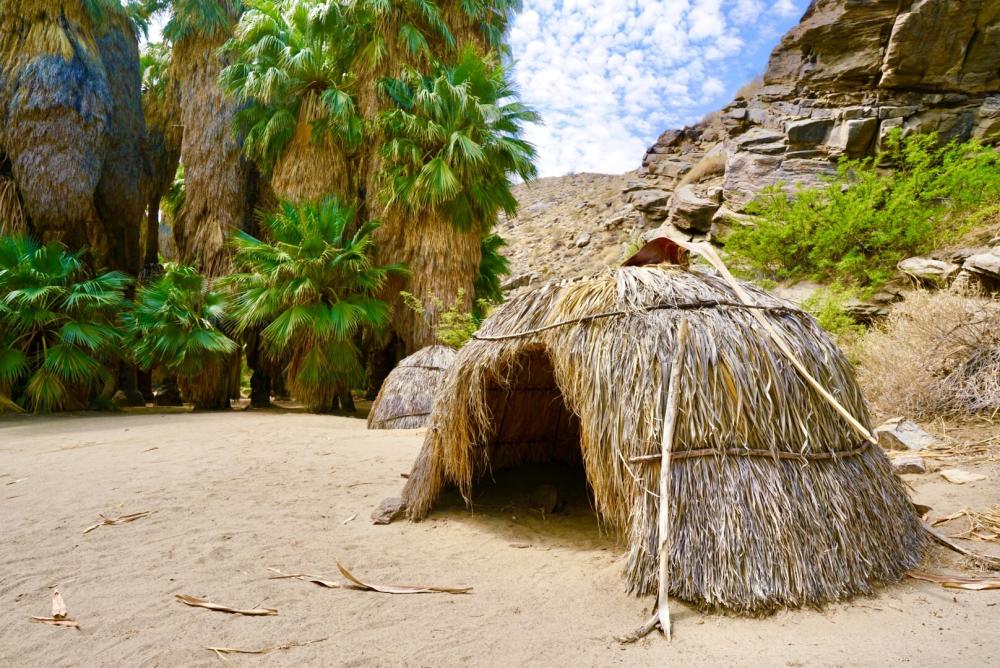
Cahuilla-style home in Andreas Canyon.
The Pass Cahuilla lived in the San Gorgonio Pass, a corridor between the San Bernardino Mountains to the north and the San Jacinto Mountains to the south.
The San Jacinto Mountains were home to the Mountain Cahuilla. Here, Cahuilla hunters would find “deer, mountain sheep, rabbits, squirrels, and smaller animals” (The Cahuilla). Women would gather nuts, seeds, and berries depending on the season.
Though they spoke slightly different dialects, the Desert, Pass, and Mountain Cahuilla still shared traditions and beliefs, and their lifestyles were very similar. Occasional attacks from neighboring groups were a reality, and the environment posed a constant threat, but overall, the Cahuilla lived in harmony with the land, each other, and other tribes.
The Cahuilla people have a rich and vibrant culture deeply rooted in their ancestral lands. They are deeply connected to the natural environment and consider the mountains, canyons, and desert landscapes of the Palm Springs area sacred.
Before the arrival of European settlers, the Cahuilla Indians lived a semi-nomadic lifestyle, moving between villages depending on the availability of resources. They had a well-developed social structure with leaders who governed individual villages.
Arrival of the Spanish
The arrival of Spanish colonizers in the late 18th century significantly impacted the Cahuilla way of life. The introduction of new diseases, conflicts over land, and forced assimilation brought various challenges to their existence.
The Spanish began establishing trade routes from Mexico and setting up missions along the Pacific Coast, and some Cahuilla welcomed the newcomers. A small number even converted to Catholicism.
However, exploitation of Cahuilla ancestral land became more problematic after the Mexican Revolution began in 1810. Having gained control over much of Southern California, the Mexican government began taking Cahuilla land and giving it to its people for farming and ranching.
Indian Removal Act
In 1830, President Andrew Jackson signed the Indian Removal Act, which authorized the federal government to relocate tribes who lived within existing states or territories. Although this act primarily affected Indian tribes living east of the Mississippi (since California was not yet a state), it was the start of the American government’s control of Indian affairs and the forced removal and relocation of Native Americans. The long-term consequences of the Indian Removal Act were profound. It resulted in the displacement and loss of Native American lives, cultures, and territories.
By the 1840s, the United States had more or less conquered Southern California, and waves of new settlers began flooding the area and taking over even more Indian lands, streams, and resources.
Bradshaw Trail
California became a state in 1850, bringing a new group of people to the inland region of Southern California. The discovery of gold in 1863 created a population surge as potential prospectors flocked to the region where the gold was discovered on the east side of the Colorado River in Arizona. It was the middle of the Civil War, and people were happy to move westward.
William Bradshaw had come to California in June 1862 to find his fortune. He gathered a party of adventurers and headed eastward from Los Angeles to a rumored new discovery of gold in La Paz ahead of what he anticipated would be another rush for gold and the boom that might make him wealthy. The route they broke was named The Bradshaw Trail. By the end of the Civil War, the link was complete to the eastern states. Bradshaw had opened Arizona and joined it to the United States.
Bradshaw was befriended by Chief Cabazon, a leader of the Cahuilla tribe, who shared his knowledge of the ancient trade routes through the Colorado Desert and the location of springs and water holes where Bradshaw would establish stations. Bradshaw traveled through AGua Caliente, now Palm Springs.


Southern Pacific Railroad
The Southern Pacific Railroad played a significant role in the development and growth of Palm Springs. The railroad's construction in the late 19th century opened up new opportunities for trade, tourism, and residential development in the region.
The construction of the Southern Pacific Railroad in Palm Springs began in the early 1870s as part of the company's ambitious expansion plans across California. The rail line was intended to connect Southern California to the rest of the state and beyond. The company forged a deal with the US government to acquire odd-numbered sections of land in exchange for building the railroad.
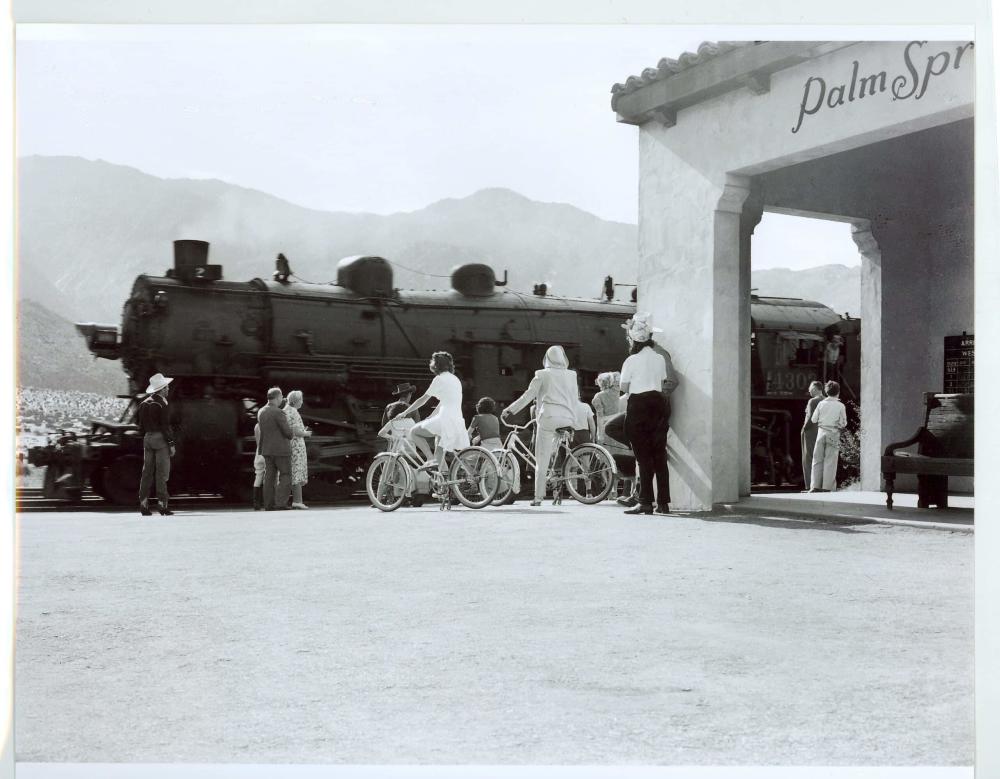
Indian Rights & Allotments
It wasn’t until the 1870s that the Indian Rights Association emerged in response to the rising conflict over land and rights between Native Americans and non-Indians. The organization proposed reserving parcels of land for native tribes — an idea that initially seemed to protect the Cahuilla. So, from 1875 to 1877, the U.S. government, under the executive order, established the first reservations for Cahuilla Indians.
On May 15, 1876, Section 14 and a portion of Section 22 (Tahquitz Canyon) were set aside as the Agua Caliente Indian Reservation by Executive Order of President Ulysses S. Grant. Later, in 1877, President Hayes extended it to cover the even-numbered sections in three townships, which totaled some 32,000 acres. All of the land was tribally owned. The Government had previously given the odd-numbered sections to the railroad in the early 1870s as an incentive to build a cross-country rail line.
The establishment of Indian reservations caused more changes for Native Americans than the arrival of the Spanish. Just 10 years after the first Cahuilla reservations were established, the American government passed the General Allotment Act of 1887, also known as the Dawes Act.
The Dawes Act sought to dissolve tribal culture completely and allowed reservation land to be divided and given to individual tribal members who agreed to separate themselves from the tribe. In return, they were granted U.S. citizenship. Native American children were sent to government schools to learn English, and traditional Indian spiritual practices were banned as a result of these forced assimilation policies. Moreover, the Cahuilla weren’t allowed to govern their people. It would take a nearly four-decade fight for the Cahuilla to gain some semblance of protection over their culture and land.
The reservation is a unique checkerboard pattern of alternating square miles, left over after the federal land grant to the Southern Pacific Railroad intended to induce the building of the transcontinental railroad lines. In 1917, Congress authorized these reservation lands to be allotted to individual members of the Agua Caliente Tribe, with the title held in trust by the federal government. However,, the Secretary of the Interior failed to execute the allotment for decades, resulting in lawsuits known as the St. Marie Cases filed in 1936.
When the City of Palm Springs was incorporated in 1938, its boundaries included some 8,000 acres of Indian land. At the time, there were 50 members of the Agua Caliente tribe. Palm Springs is the only place in the US where restricted tribal land is intermingled in a checkerboard pattern with other private and public land.

Agua Caliente Tribal Members 1916
Extensive lobbying by the brave and sophisticated all-female Agua Caliente Tribal Council led by Vyola Ortner, with the assistance of Riverside Congressman Dalip Singh Saund and Palm Springs Mayor Frank Bogert, resulted in President Eisenhower signing into law in 1959 an act to “equalize” the value of allotments to individual tribal members and an amendment to the Indian Leasing Act to authorize the Secretary of the Interior to allow allotted as well as tribal lands to be leased for 99 years, making such lands economically viable and extremely valuable.
A New Economic Outlook
In the following decades, Tribal Members gained more access to healthcare, education, and job opportunities despite continued shortcomings in income and land ownership. Federal legislation like the Indian Education Act (1972), the American Indian Religious Freedom Act (1979), and the Indian Gaming Regulatory Act (1988) also played a crucial role in the development and protection of tribal culture and business.
Under the 99-year lease agreements, the tribe receives rent payments, revenue sharing, and other economic benefits from the leased lands. The revenue generated from these leases has played a crucial role in supporting tribal programs, infrastructure development, education, healthcare, and other essential services for tribal members.
The checkerboard reservation land of Palm Springs, with its mix of tribal and non-tribal lands, has created a unique dynamic in the city's growth and development. It has allowed the tribe to maintain a strong presence within the community while collaborating with non-tribal entities to promote economic prosperity.
However, the 99-year land leases have also posed challenges and complexities. As the leases approach their expiration, discussions and negotiations take place between the tribe and the lessees regarding lease extensions or new agreements. These negotiations involve considerations such as land values, rental rates, and the evolving needs and goals of both tribal and non-tribal parties.
The checkerboard reservation land system has shaped the landscape of Palm Springs and contributed to the tribe's economic self-sufficiency. It highlights the tribe's ability to adapt and navigate complex land ownership issues while striving to maintain their cultural heritage and provide for the welfare of their community.
Today, the Agua Caliente Band of Cahuilla Indians operates three highly successful casinos, including the Agua Caliente Casino Resort Palm Springs.
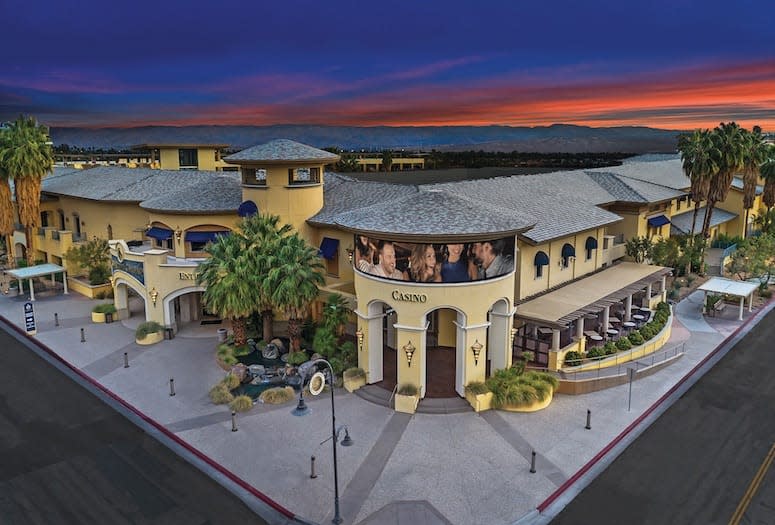
The Story Lives On
The Agua Caliente Band of Cahuilla Indians continue to play an essential role in the Palm Springs area. They actively engage in tribal governance, cultural preservation, and promoting awareness of their heritage. The Agua Caliente Band of Cahuilla Indians is one of the federally recognized tribes in the region, and they have made significant contributions to the local economy and community through their successful casino and resort operations.
Perhaps the most important part of the Cahuilla story is that it hasn’t ended—it’s still being created and shared. Through the telling and retelling of their past, the Cahuilla have their own eternal story, one that can never be erased or forgotten.
The tribe's history is a testament to their enduring spirit and their ongoing efforts to maintain their cultural identity in the face of adversity. They serve as a reminder of the rich cultural diversity and history that has shaped the Palm Springs area.
Visit the Agua Caliente Cultural Museum to learn more. The museum showcases the history, art, and traditions of the Cahuilla people and serves as a cultural center and educational resource for tribal members and the general public.

Other Cahuilla Tribes
Today, there are nine federally recognized Cahuilla tribes, including the Agua Caliente Band of Cahuilla Indians. In 1955, they established their own Tribal Council to oversee all Tribal government affairs. Each of the nine tribes has its own reservation and tribal council. These Indian reservations are located in the same general territory where the Cahuilla have lived for thousands of years, encompassing Imperial, Riverside, and San Diego counties.
Other Cahuilla Tribes include:
Augustine Band of Cahuilla Indians, Coachella
Cabazon Band of Mission Indians, Indio
Cahuilla Band of Mission Indians of the Cahuilla Reservation, Anza
Los Coyotes Band of Cahuilla and Cupenor Indians of the Los Coyotes Reservation, Warner Springs, San Diego County
Morongo Band of Cahuilla Mission Indians of the Morongo Reservation, Banning
Ramona Band of Cahuilla, Anza
Santa Rosa Band of Cahuilla Indians, Riverside County, between Palm Springs and Anza
Torres-Martinez Desert Cahuilla Indians, Thermal
Agua Caliente Tribe
Agua Caliente Cultural Museum
Agua Caliente Hot Mineral Springs – A Story of Healing
Breaking the Glass Ceiling – Big Time!
Section 14: The Untold Story of Palm Springs' Heart and Heritage
- 14 min read
A Story of Community, Resilience, and Renewal on Tribal Land What Was…
Breaking the Glass Ceiling - Big Time!
- 8 min read
How the Agua Caliente Tribe’s All-Woman Council Changed Palm…
Agua Caliente Hot Mineral Springs: A Sacred Legacy of Healing & Culture
- 4 min read
The History The Agua Caliente Band of Cahuilla Indians has been…
Discover the Best Spas in Palm Springs
- 4 min read
Unwind and Rejuvenate with these Luxury Treatments Relax and replenish…
The Untold Stories Behind Palm Springs Street Names
- 8 min read
Discover the Meaning Behind Palm Springs Street Names Vista Chino…
